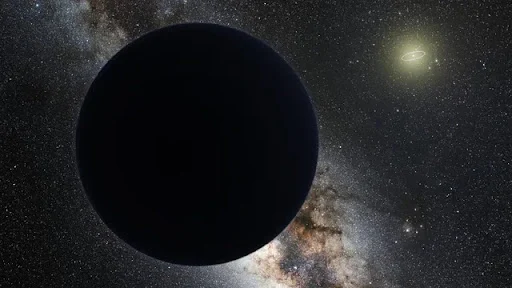Astronomers have recently uncovered a fascinating find in the outer reaches of our solar system: a potential new dwarf planet dubbed 2017 OF201. Discovered during the ongoing search for the elusive Planet 9, this object is estimated to be between 290 to 510 miles in diameter and follows a peculiar orbit far beyond Neptune. Its discovery is stirring up excitement—and some debate—about what it means for the Planet 9 hypothesis.
Here's why this discovery is making waves:
- A "cousin" to Pluto: 2017 OF201 is estimated to be around 700 kilometers (435 miles) in diameter, which is roughly one-third the size of Pluto. Its size suggests it could be classified as a dwarf planet, similar to Pluto.
- Extreme Orbit: This new object has a highly elongated orbit that takes approximately 25,000 years to complete. At its farthest point (aphelion), it swings out over 1,600 Astronomical Units (AU) from the Sun, reaching well into the Oort Cloud. For comparison, Neptune orbits at about 30 AU.
- Challenges Planet Nine Theory: The Planet Nine hypothesis postulates the existence of a massive, undiscovered planet (up to 10 times Earth's mass) whose gravitational pull influences the clustered orbits of some icy objects in the Kuiper Belt beyond Neptune. However, 2017 OF201's orbit does not align with this predicted clustering pattern. This suggests that the observed orbital anomalies might not be caused by a single large planet, but rather by the presence of many smaller, similar objects like 2017 OF201.
- Implications for Outer Solar System: The discovery of 2017 OF201, which spends most of its time too far away to be easily detected, implies there could be hundreds of other similar dwarf planets in the outer solar system that remain unseen. This changes our understanding of the distribution of objects in the far reaches of our cosmic neighborhood.
- Ongoing Research: Astronomers are seeking observation time on powerful telescopes like the James Webb Space Telescope (JWST), Hubble, and ALMA to further study 2017 OF201 and search for other potential objects in this region. The upcoming Vera Rubin Observatory is also expected to play a crucial role in future discoveries.
While the search for Planet Nine continues and some researchers still hold onto the hypothesis, the discovery of 2017 OF201 adds a new layer of complexity and suggests alternative explanations for the mysterious orbital patterns observed in the outer solar system. It highlights that our "backyard" in space still holds many unknown wonders.

